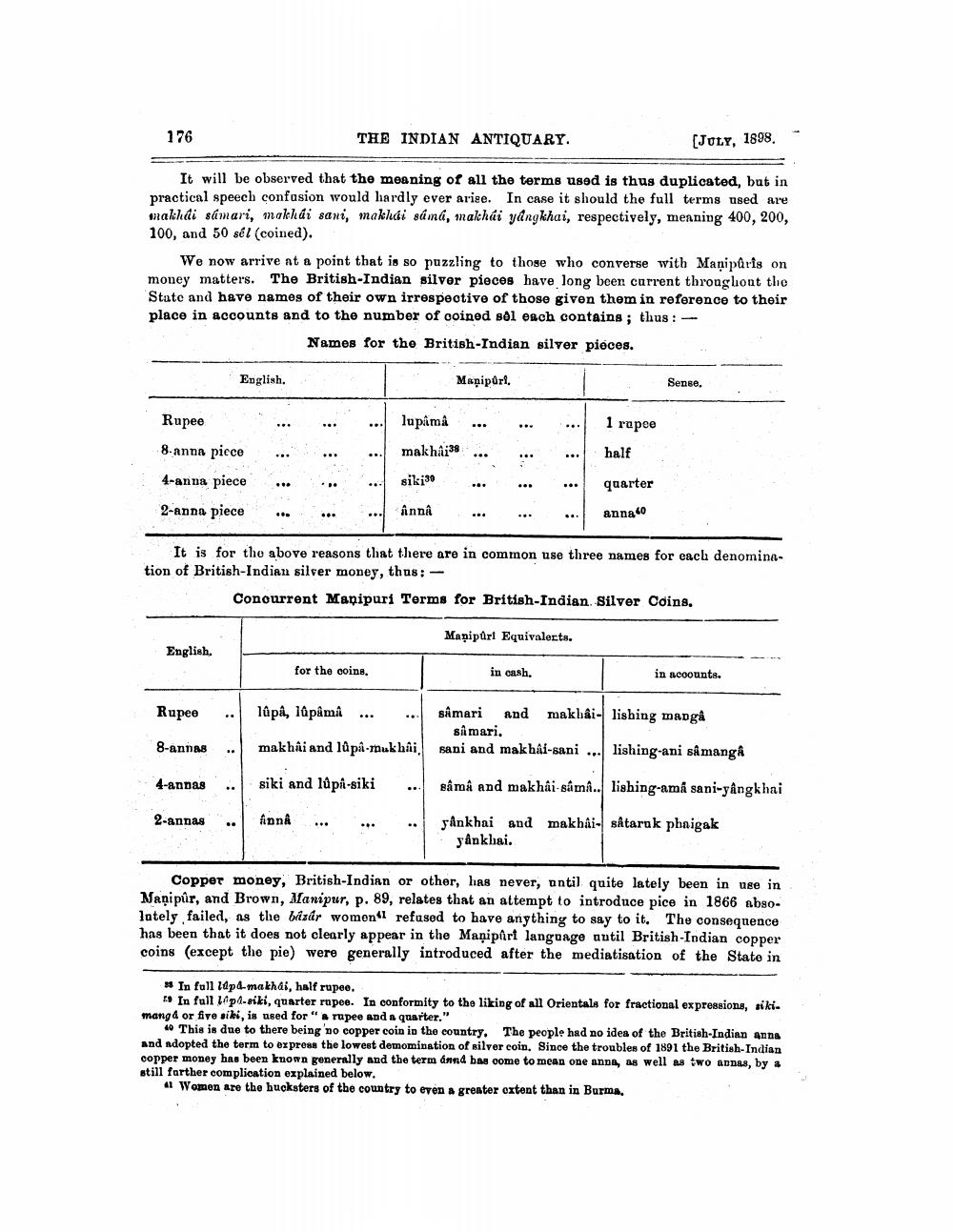________________
176
THE INDIAN ANTIQUARY.
[JULY, 1898.
It will be observed that the meaning of all the terms used is thus duplicated, but in practical speech confusion would hardly ever arise. In case it should the full terms used are makhdi samari, makhai sani, makhai sámá, makhái yangkhai, respectively, meaning 400, 200, 100, and 50 sel (coined).
We now arrive at a point that is so puzzling to those who converse with Manipuris on money matters. The British-Indian silver pieces have long been current throughout the State and have names of their own irrespective of those given them in reference to their place in accounts and to the number of coined sol each contains; thus: - Names for the British-Indian silver pieces.
Rupee
8-anna piece
4-anna piece
2-anna piece
English.
Rupee
8-annas
4-annas
English.
2-annas
..
It is for the above reasons that there are in common use three names for each denomination of British-Indian silver money, thus: -
Concurrent Manipuri Terms for British-Indian Silver Coins.
Manipuri Equivalents.
Manipuri.
for the coins.
lupâmâ
makhai38
siki30
ânnâ
in cash.
1 rupee
half
lapi, lapāmi
sâmari sâmari. makhai and lûpâ-mukhâi, sani and makhai-sani
siki and lûpâ-siki
Annâ
quarter
anna40
Sense,
in accounts.
and makhai- lishing mangå
lishing-ani sâmangk
sâmâ and makhai-sâmâ.. lishing-ama sani-yângkhai
yankhai and makhai- såtaruk phaigak yankhai.
Copper money, British-Indian or other, has never, until quite lately been in use in Manipûr, and Brown, Manipur, p. 89, relates that an attempt to introduce pice in 1866 absolately failed, as the bazár women refused to have anything to say to it. The consequence has been that it does not clearly appear in the Manipârt language nutil British-Indian copper coins (except the pie) were generally introduced after the mediatisation of the State in
38 In full lapd-makhái, half rupee.
In full lap-siki, quarter rupee. In conformity to the liking of all Orientals for fractional expressions, siki manga or five siki, is used for "a rupee and a quarter."
40 This is due to there being no copper coin in the country. The people had no idea of the British-Indian anna and adopted the term to express the lowest demomination of silver coin. Since the troubles of 1891 the British-Indian copper money has been known generally and the term ánnd has come to mean one anna, as well as two annas, by a still farther complication explained below.
41 Women are the hucksters of the country to even a greater extent than in Burma.




